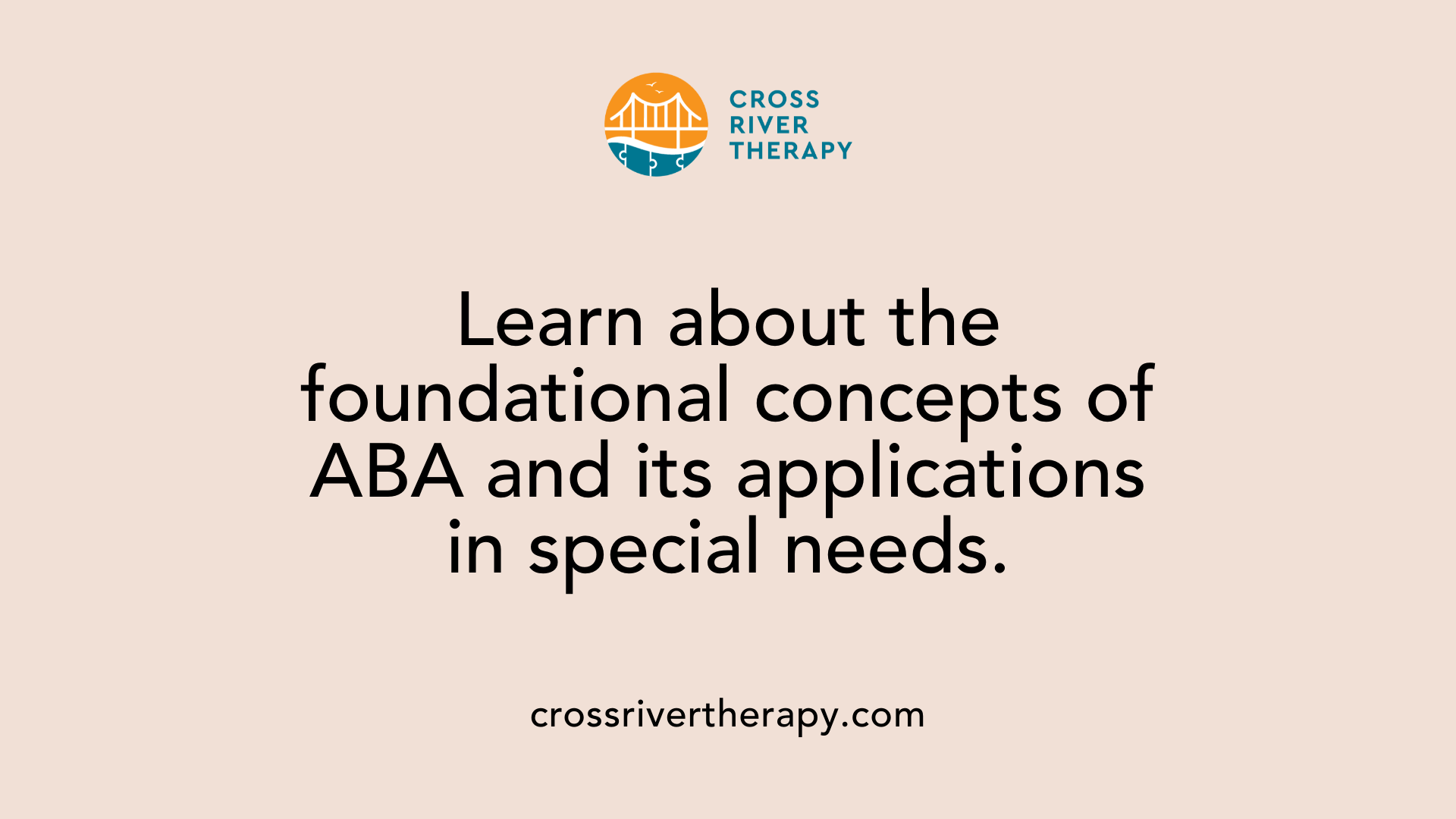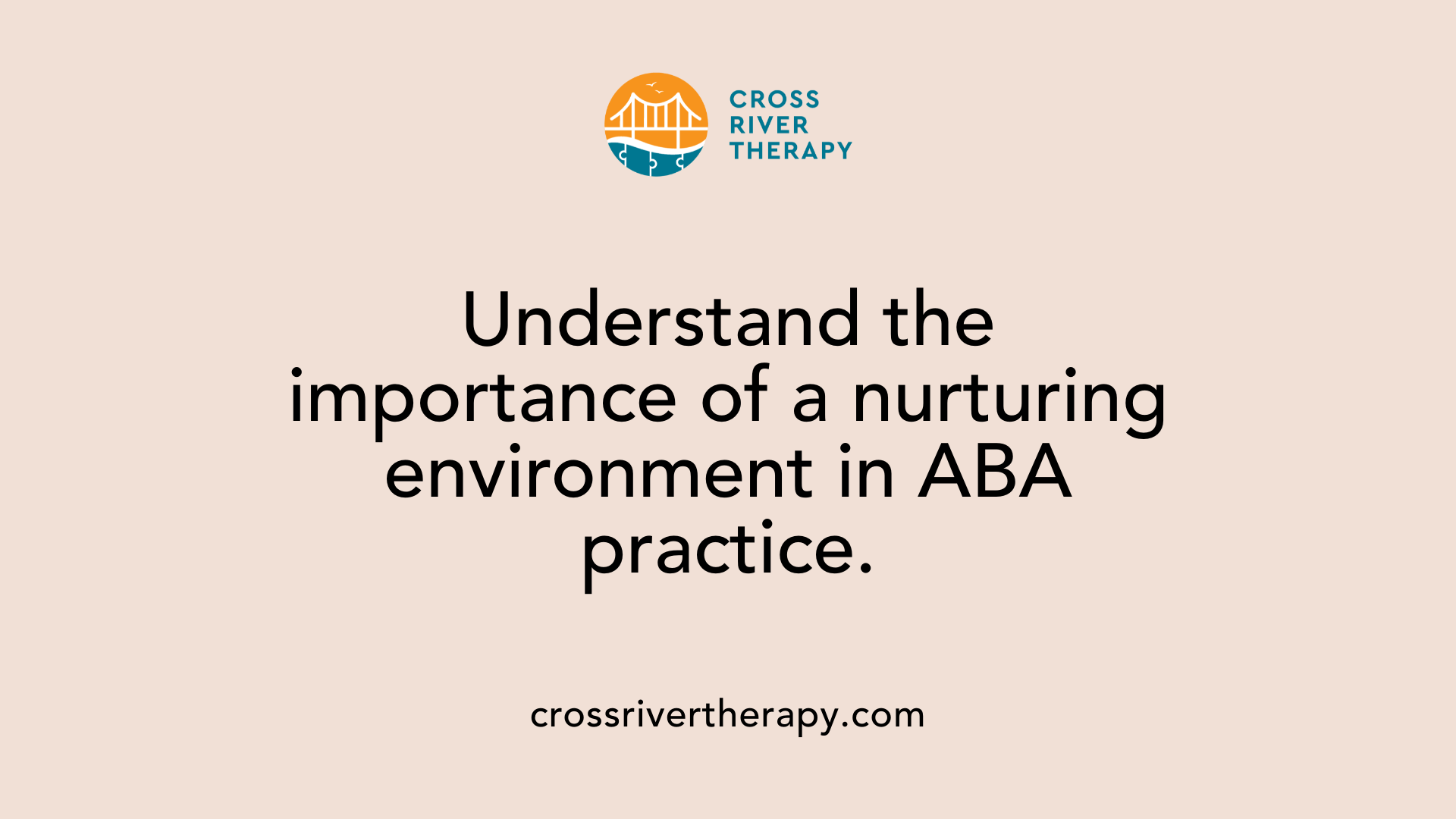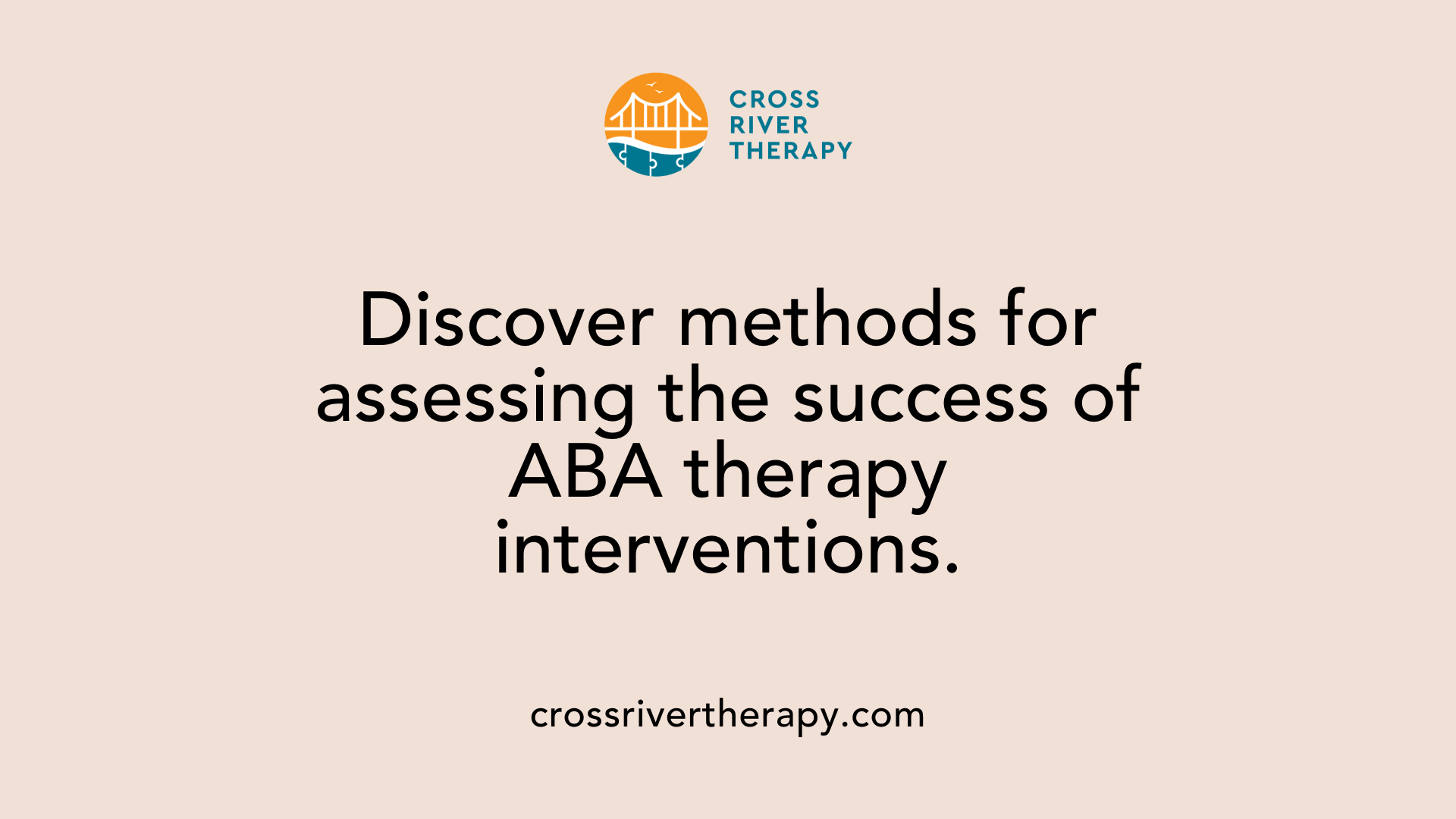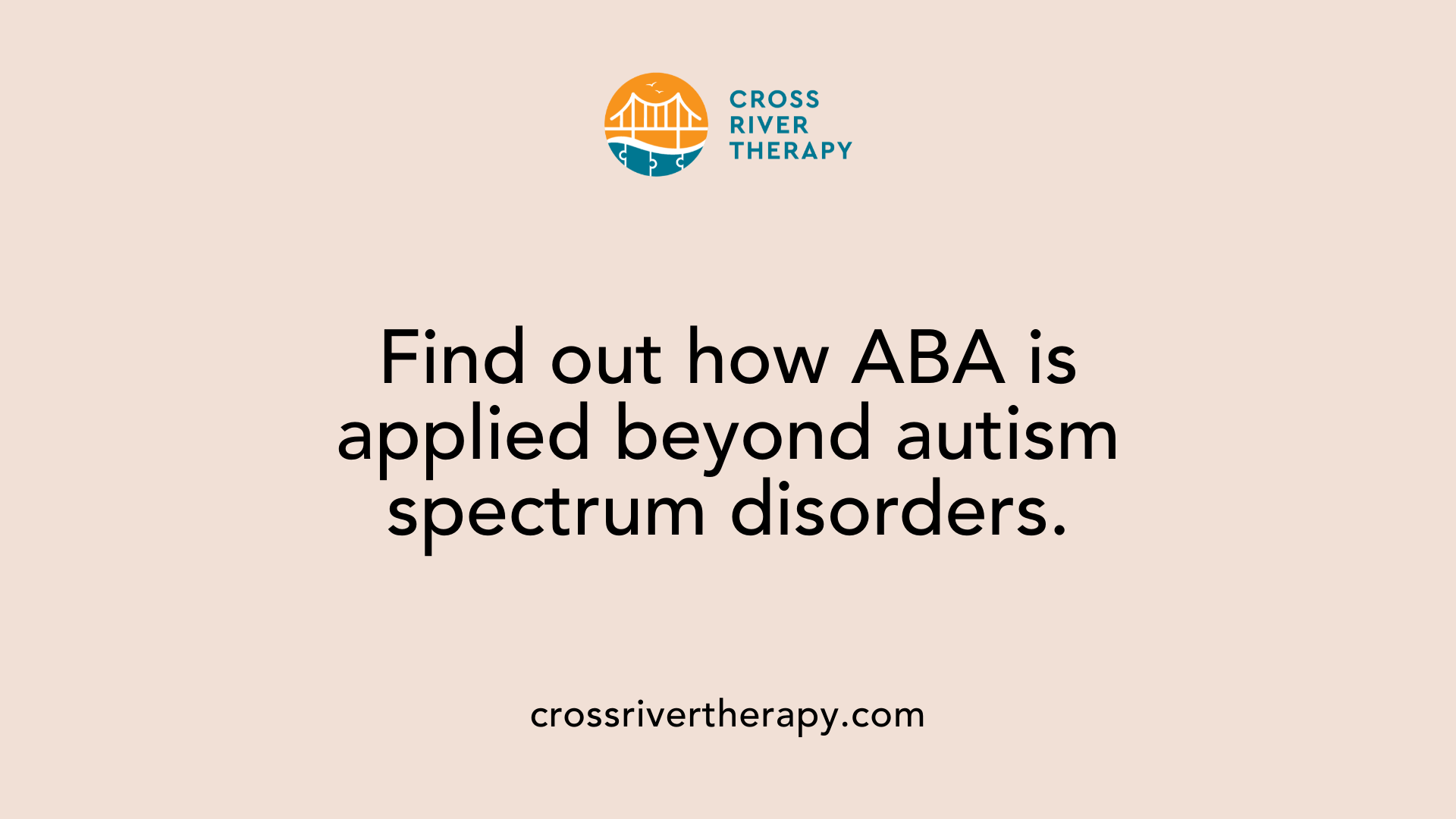Understanding ABA's Role in Supporting Children with Complex Needs
Applied Behavior Analysis (ABA) is an evidence-based approach often used to support children with complex needs, such as those with autism spectrum disorders. With its foundation in behavior science, ABA aims to increase helpful behaviors while reducing those that are harmful or interfering with learning. The therapy is characterized by its personalized nature, relying on data-driven methods to tailor interventions uniquely suited to each child. In this article, we delve into how ABA therapy is applied to children with complex needs, encompassing various methodologies, success stories, and considerations for selecting appropriate services.
The Fundamentals of Applied Behavior Analysis

Understanding Applied Behavior Analysis (ABA) in the Context of Special Needs
Applied Behavior Analysis (ABA) is a scientific approach focused on understanding and changing behavior, particularly in individuals with special needs, such as autism spectrum disorder (ASD). This method emphasizes systematic improvement and teaching of new behaviors by examining the influence of environmental factors on these behaviors. Through techniques such as positive reinforcement, prompting, shaping, and task analysis, ABA fosters development in areas like social, academic, and daily living skills.
Significance of ABA in Special Needs
The significance of ABA in special needs arises from its structured nature, enabling individualized treatment plans (ITPs) tailored to the unique challenges and strengths of each child. When children engage in ABA therapy for over 20 hours a week, research indicates substantial developmental gains, thereby enhancing their independence and reducing the need for special services later in life. Moreover, over 90% of children undergoing intensive ABA therapy show significant progress in vital life skills, promoting integration into public schooling and everyday activities.
Techniques Used in ABA
ABA employs various techniques that cater to the individual needs of children, which include:
- Discrete Trial Training (DTT): Breaking skills into manageable parts for step-by-step learning.
- Pivotal Response Treatment (PRT): Centering on motivation and parent involvement in play-based learning.
- Natural Environment Training (NET): Teaching skills in natural settings to promote generalization.
- Functional Behavior Assessment (FBA): Analyzing behaviors to inform effective interventions.
These methods highlight ABA's versatility and effectiveness in fostering communication, social interactions, and daily living skills for children with complex needs.
Diverse Benefits of ABA Therapy

What conditions does ABA therapy help with?
ABA therapy primarily supports individuals with autism spectrum disorder (ASD), but its applications extend to various conditions such as ADHD, OCD, and PTSD. Its focus is on modifying behavior, which includes increasing positive behaviors and decreasing negative or harmful behaviors. This therapy is particularly effective in enhancing social interactions and communication skills, offering valuable techniques tailored to each child's unique challenges.
The methodology used in ABA is highly individualized, with treatment plans designed by Board Certified Behavior Analysts (BCBAs) who assess specific needs. Techniques like Pivotal Response Treatment (PRT) and Discrete Trial Training (DTT) are commonly employed, allowing therapists to break down complex skills into manageable parts, thus making learning more accessible.
Developmental gains from ABA
Research indicates that substantial developmental gains are achievable through comprehensive ABA therapy, especially when treatment is initiated early in childhood. Children who engage in ABA therapy for over 20 hours a week are found to achieve significant improvements in cognitive abilities, language development, and daily living skills. A notable benefit is the potential reduction in the need for special services later in life, as early intervention equips children with essential skills necessary for independence.
In fact, studies show that more than 90% of children undergoing intensive ABA therapy experience significant advancements in their overall functioning, further affirming this approach's effectiveness in promoting long-term positive outcomes for children facing developmental challenges.
| ABA Therapy Conditions and Benefits |
Description |
Techniques Involved |
| Autism Spectrum Disorder (ASD) |
Supports improved social interaction and communication skills. |
Discrete Trial Training (DTT), PRT |
| Attention Deficit Hyperactivity Disorder (ADHD) |
Enhances focus and self-regulation capabilities. |
Natural Environment Training (NET) |
| Other developmental disorders (e.g., OCD, PTSD) |
Behavioral modification and skill acquisition. |
Functional Communication Training (FCT) |
| Significant developmental gains |
Increases in language skills and daily living abilities. |
Personalized Treatment Plans |
| Early intervention benefits |
Reduces the need for special services later in life. |
Evidence-based methodologies |
Creating a Supportive Environment for ABA Therapy

Why is a supportive environment important in the ABA therapy process?
A supportive environment is essential in the ABA therapy process as it enhances learning and fosters positive behavioral changes. Different settings—clinic, home, and community—allow for individualized programming tailored to the child's needs. Structured and predictable environments help alleviate anxiety and promote a sense of security.
Incorporating familiar items, sensory-friendly tools, and consistent routines not only makes children feel more comfortable but also significantly improves engagement during therapy. A supportive atmosphere encourages effective communication and social skill development, vital for children with autism. Overall, a well-structured and nurturing environment facilitates the application of ABA principles, reinforcing learning and promoting emotional well-being.
Settings for ABA therapy
ABA therapy can be conducted in various environments:
| Setting |
Characteristics |
Benefits |
| In-Home |
Familiar surroundings, less distraction |
Comfort of home can reduce anxiety, allowing better focus |
| In-Clinic |
Structured environment with trained therapists |
Access to specialized resources and consistent learning |
| Community |
Real-life scenarios for social interactions |
Exposure to natural settings fosters practical skill application |
Impact on learning and behavior
The environment plays a significant role in the effectiveness of ABA therapy. When children feel secure and understood in a nurturing space, they show increased willingness to engage and learn.
Furthermore, a supportive atmosphere allows therapists to implement individualized plans effectively. Positive reinforcement strategies can be used more efficiently in a comfortable setting. Hence, the combination of tailored approaches and a nurturing environment cultivates an optimal learning experience, ensuring progress in development.
Exploring Various Techniques in ABA Therapy
What are some ABA therapy techniques and examples?
ABA therapy employs a variety of techniques tailored to meet the unique needs of children with autism. Here are some prominent methods:
Positive Reinforcement: This involves giving rewards for desired behaviors, which encourages children to repeat those behaviors. For instance, a child might receive praise or a small treat for successfully completing a task.
Discrete Trial Training (DTT): DTT breaks skills into smaller, manageable parts. Each part is taught sequentially, with clear instructions and reinforcement given after correct responses, making learning structured and achievable.
Functional Communication Training (FCT): FCT helps children learn appropriate ways to communicate, effectively replacing problematic behaviors with functional communication methods. This can empower children to express their needs without acting out.
Modeling: In this technique, therapists demonstrate desired behaviors for children to imitate, providing a clear example of how a task should be performed
Prompting and Fading: This method involves initially providing support or cues to help a child learn new skills and gradually reducing assistance to promote independence.
Picture Exchange Communication System (PECS): PECS uses images to aid communication, perfect for non-verbal children or those with limited language skills.
Behavior Contracts: Especially for older children, these agreements outline expected behaviors, consequences, and rewards, fostering accountability while establishing structure.
Why is Positive Reinforcement important in ABA?
Positive reinforcement is crucial in ABA as it significantly increases the likelihood that children will repeat desired behaviors. By rewarding accomplishments, whether through verbal praises or tangible rewards, children are motivated to engage in those positive actions more frequently. This approach not only helps in skill development but also builds the child’s self-esteem and fosters a love for learning.
Customizing ABA Therapy to Meet Individual Needs
Personalizing ABA therapy
ABA therapy is inherently flexible, designed to adapt to the unique needs of each child. To customize the therapy effectively, therapists conduct thorough evaluations to identify individual strengths and challenges. This process allows therapists to determine the most suitable techniques and strategies for each child, creating a tailored therapy plan that resonates with their learning style.
Assessment processes
A robust assessment is the foundation for effective ABA therapy. This includes evaluations of a child's behavioral patterns, communication abilities, and social skills. Tools such as Functional Behavior Assessments (FBAs) help understand the motivations behind behaviors, ensuring that interventions are appropriately aligned with each child's specific needs. The assessments inform the development of Individualized Treatment Plans (ITPs), which outline clear, measurable goals and the methods required to achieve them.
Collaboration with families
Active involvement of families in the ABA process is crucial. Caregivers provide insights into the child’s needs, preferences, and behaviors in their home environment. Collaboration encourages meaningful goal setting and helps in selecting reinforcers that motivate the child effectively. Regular reviews and adjustments based on the child’s progress further ensure the therapy remains relevant and impactful. This partnership not only aids in the child’s learning but also fosters continuity and consistency across different settings.
| Aspect |
Description |
Importance |
| Personalization |
Tailored goals and strategies for each child |
Higher engagement and relevance of therapy |
| Assessment Process |
Comprehensive evaluations and FFAs |
Informed intervention strategies |
| Family Collaboration |
Involvement of parents in goal setting |
Enhanced motivation and generalization of skills |
Roles of Therapists and Caregivers in ABA
How do therapists and caregivers support children undergoing ABA therapy?
Therapists and caregivers play crucial roles in supporting children undergoing ABA therapy, working hand-in-hand to foster positive development. Active collaboration is key, as caregivers are often the primary observers of the child's everyday behaviors. This insight allows therapists to tailor interventions based on real-world experiences, creating a more effective treatment plan.
Caregiver involvement enhances the therapy’s impact by ensuring that skills learned during sessions are applied across various contexts. By integrating ABA strategies into daily routines, caregivers help reinforce positive behaviors, making significant strides in the child's developmental journey. Regular check-ins between caregivers and therapists are vital. These meetings facilitate sharing of progress updates, adjustments to the individualized treatment plans, and pragmatic feedback on strategies that are proving effective at home.
In addition to routine communication, caregivers contribute by participating in training sessions with therapists. This equips them with the necessary tools to implement techniques consistently, promoting a seamless transition of skills learned in therapy environments to everyday life. All these efforts help build a supportive foundation that fosters trust, assures consistency, and ultimately enhances the child's ability to thrive in social and academic domains.
Setting and Assessing Goals in ABA Therapy
How are goals set and individualized treatment plans created within ABA therapy?
In Applied Behavior Analysis (ABA) therapy, setting goals and creating individualized treatment plans (ITPs) involve a thorough and collaborative process. This approach includes input from therapists, Board Certified Behavior Analysts (BCBAs), parents, and sometimes other professionals, to ensure that the goals are aligned with the child’s overall developmental needs and treatment objectives.
Individualized treatment plans begin with comprehensive assessments that identify each child's strengths and challenges, focusing on essential areas such as communication, social skills, and daily living abilities.
A strong emphasis on a data-driven methodology allows for monitoring of the child’s progress, enabling adjustments to be made to interventions as necessary. This ensures that the therapy remains targeted and relevant to each child’s needs. Moreover, family involvement is recognized as a crucial element, enhancing the consistency and effectiveness of the treatment across varying environments, thereby promoting meaningful learning experiences.
Evaluating the Effectiveness of ABA Therapy

How can the effectiveness of ABA therapy be evaluated?
Evaluating the effectiveness of Applied Behavior Analysis (ABA) therapy involves multiple methods that provide insights into client progress. Key assessment methods include the monitoring of individual outcomes in communication, social skills, and adaptive behaviors. Regular data collection during therapy sessions is crucial; it allows therapists to aggregate and analyze information regarding a child's progress and make necessary adjustments to treatment plans.
Analyzing therapy outcomes
Family and community outcomes are also integral to evaluating ABA therapy's effectiveness. These outcomes often encompass the support systems in place and families' perceptions of the improvements achieved through therapy. This holistic evaluation ensures that the therapy's impacts are not only limited to the child but extend to their surroundings.
Impact on development and skill generalization
Furthermore, the generalization of skills across various settings—home, school, and community—plays a significant role in assessing ABA therapy's effectiveness. When children can apply learned behaviors in different contexts, it indicates that the therapy is influencing their day-to-day life positively. Research indicates that ABA interventions lead to moderate to high effectiveness, particularly in improving IQ scores, language development, and social interaction skills for children with Autism Spectrum Disorder (ASD). Through these comprehensive evaluation methods, the impact of ABA therapy can be clearly understood and highlighted.
Ensuring Safe and Ethical Practice in ABA Therapy
What are safe practices versus unsafe practices in ABA therapy?
Safe practices in ABA therapy are crucial for fostering an effective and nurturing environment. These practices include:
- One-to-One Support: Ensuring that each child receives individualized attention helps to tailor interventions and safeguard against neglect.
- Positive Reinforcement: Utilizing rewards for desirable behaviors encourages children to engage positively.
- Behavioral Skills Training (BST): This trains children in essential skills, promoting their safety and autonomy.
- Environmental Assessments: Regularly evaluating the therapy environment to reduce risks before conducting sessions.
- Developmentally Appropriate Activities: Engaging children in activities suitable for their age and developmental level helps maintain interest and safety.
On the other hand, unsafe practices may include:
- Ignoring Environmental Risks: Failing to assess potential hazards before beginning therapy can lead to accidents.
- Excluding Families: Not actively involving families in safety planning can leave critical gaps in support strategies.
- Restrictive Strategies: Utilizing overly restrictive methods without just cause can hinder the child’s emotional well-being and development.
Emphasizing the generalization of learned safety skills across various settings, alongside meticulous data collection to observe progress, is vital in promoting effective ABA therapy.
Ethical considerations in ABA therapy
Ethical practice in ABA therapy requires adherence to principles that prioritize the well-being of the child. Key ethical considerations include:
- Informed Consent: Ensuring that caregivers and families are fully informed about the therapy methods being applied.
- Individualized Treatment Plans: Customizing interventions ensures that each child’s unique needs are met respectfully and effectively.
- Least Restrictive Environment: Therapeutic strategies should favor minimal restrictions to allow for maximum independence.
- Ongoing Evaluation: Regular reviews of treatment effectiveness are necessary to ensure that interventions remain relevant and beneficial.
By integrating these ethical considerations into daily practice, ABA therapy can offer safe and supportive interventions that truly assist children with complex needs.
Broadening the Scope of ABA Beyond Autism

Is ABA therapy only used for autism, and what controversy surrounds it?
While ABA therapy is widely recognized for its effectiveness in treating individuals with autism spectrum disorders (ASD), it is not limited to this demographic. ABA principles can also be beneficial for a wide range of developmental and behavioral challenges, including ADHD, OCD, PTSD, and learning disabilities. It is a versatile approach that helps in encouraging positive behaviors not only in children with autism but also in neurotypical individuals.
However, ABA has been the subject of controversy, primarily due to its historical reliance on punitive techniques. Critics often highlight concerns that such methods can be too harsh, focusing on compliance with neurotypical behavior standards rather than valuing individual neurodiversity. This historical context has caused skepticism and criticism from some parents and professionals, who worry about emotional well-being and the importance of respecting unique needs.
In response, modern ABA practitioners have shifted towards a framework that emphasizes positive reinforcement, making learning engaging and enjoyable for children. The focus now lies on promoting autonomy and building upon individual strengths, ensuring that therapy plans are tailored to each child’s specific needs. This evolution illustrates a commitment to respecting neurodiversity while still harnessing the effectiveness of ABA techniques in various contexts.
The Future of ABA for Children with Complex Needs
As research continues to support the efficacy of ABA therapy for children with complex needs, its usage is likely to grow and further evolve. With advancements in techniques and a deepened emphasis on individualization and family involvement, ABA remains a cornerstone for fostering independence and improved life skills among children with developmental disorders. Families considering ABA can be assured of its evidence-based track record, while recognizing that selecting the right practitioners and methodologies are essential steps to maximize its benefits. ABA's adaptable nature promises ongoing innovation and long-term benefits, ensuring continued support for those it serves.
References